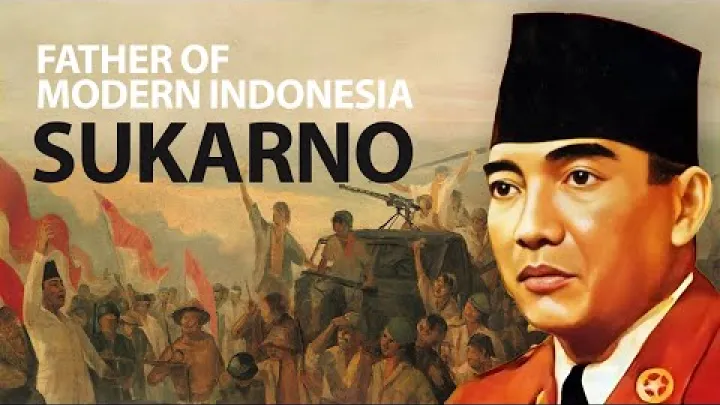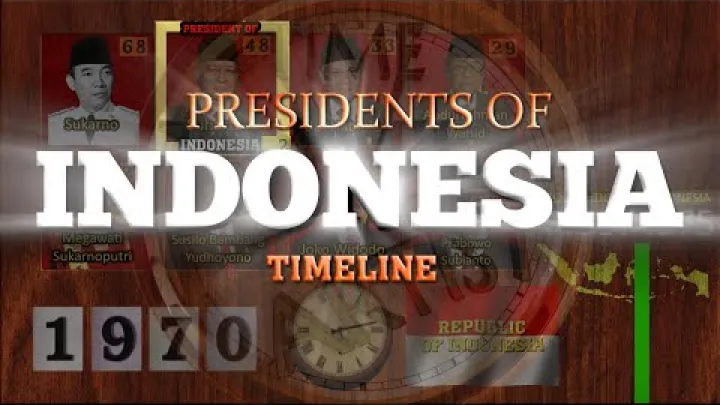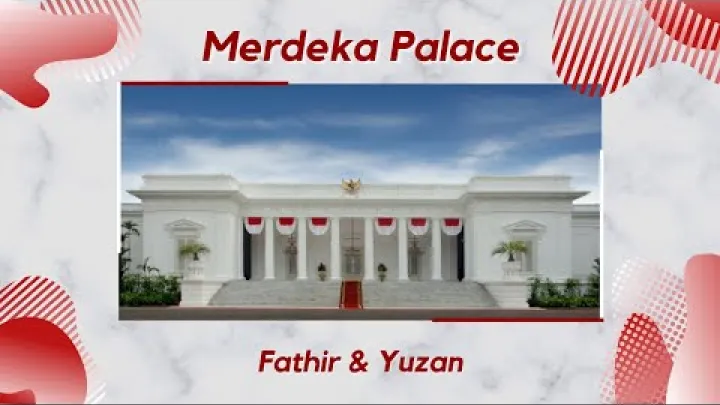Indonesia President: History, Current Leaders, and Their Impact on Indonesia
Understanding the role and history of the Indonesia president is essential for anyone interested in the country’s political landscape, whether you are a traveler, student, or business professional. The president of Indonesia is not only the head of state but also the leader who shapes the nation’s direction, policies, and global standing. This comprehensive guide explores the history of Indonesia’s presidents, their key achievements, the election process, and the symbols and protocols that define the presidency. Whether you are planning a visit, studying Indonesian history, or seeking to do business in Indonesia, this article provides valuable insights into the leaders who have influenced the country’s past, present, and future.
Who Is the President of Indonesia?
The current president of Indonesia is Prabowo Subianto, who began his term in 2024. As the president, Prabowo Subianto holds the highest executive office in the country, responsible for leading the government, setting national policies, and representing Indonesia on the international stage. The role of the president is central to Indonesia’s political system, with significant influence over domestic and foreign affairs.
| Current President | Term | Quick Facts |
|---|---|---|
| Prabowo Subianto | 2024–Present |
|
As the president of Indonesia, Prabowo Subianto is tasked with upholding the constitution, ensuring the welfare of the people, and maintaining the unity of the nation. The position is highly respected and carries significant responsibilities, making it a key point of interest for anyone seeking to understand Indonesia’s government and society.
List of Indonesia’s Presidents: Timeline and Key Achievements
Since its independence in 1945, Indonesia has been led by a series of presidents, each contributing to the nation’s development in unique ways. The following table provides a chronological overview of all Indonesia’s presidents, their terms in office, and their major achievements. This timeline highlights key transitions and historical milestones that have shaped modern Indonesia.
| President | Term | Key Achievements |
|---|---|---|
| Sukarno | 1945–1967 | Proclaimed independence, established national identity, led during early nation-building |
| Suharto | 1967–1998 | Economic growth, infrastructure development, political stability, but also controversies |
| B.J. Habibie | 1998–1999 | Transition to democracy, initiated political reforms, allowed East Timor referendum |
| Abdurrahman Wahid | 1999–2001 | Promoted pluralism, reformed civil-military relations, expanded press freedom |
| Megawati Sukarnoputri | 2001–2004 | First female president, stabilized economy, strengthened democratic institutions |
| Susilo Bambang Yudhoyono | 2004–2014 | Economic growth, anti-corruption efforts, improved international relations |
| Joko Widodo | 2014–2024 | Infrastructure modernization, social welfare programs, global engagement |
| Prabowo Subianto | 2024–Present | Focus on economic development, national security, and food sovereignty |
For a more visual reference, consider exploring a timeline infographic that illustrates the succession of Indonesia’s presidents and the major events during their terms. Key milestones include the transition from Sukarno to Suharto, the Reformasi era after 1998, and the ongoing modernization efforts in the 21st century.
Sukarno (1945–1967)
He proclaimed Indonesia’s independence on August 17, 1945, and played a pivotal role in uniting the diverse archipelago into a single nation. Sukarno’s leadership was marked by his charismatic oratory, vision for a unified Indonesia, and the establishment of the country’s foundational principles known as Pancasila.
During his presidency, Sukarno navigated the challenges of nation-building, balancing the interests of various ethnic, religious, and political groups. He introduced the concept of “Guided Democracy” in the late 1950s, aiming to stabilize the country amid political turmoil. Sukarno’s legacy includes the promotion of national identity, the construction of iconic monuments such as the National Monument (Monas) in Jakarta, and his lasting influence on Indonesia’s sense of unity and independence.
Suharto (1967–1998)
Suharto’s presidency marked a significant era in Indonesia’s history, often referred to as the “New Order.” After taking power in 1967, Suharto focused on economic development, political stability, and modernization. Under his leadership, Indonesia experienced rapid economic growth, major infrastructure projects, and improvements in education and health care. Suharto’s policies attracted foreign investment and transformed Indonesia into one of Southeast Asia’s largest economies.
However, Suharto’s long tenure was also characterized by authoritarian rule, suppression of political opposition, and human rights controversies. The government’s control over the media and political dissent led to criticism both domestically and internationally. The Asian financial crisis of 1997–1998 exposed economic vulnerabilities and sparked widespread protests, ultimately leading to Suharto’s resignation in 1998. His legacy remains complex, with both significant achievements and enduring controversies.
B.J. Habibie (1998–1999)
B.J. Habibie served as Indonesia’s third president during a critical period of transition following Suharto’s resignation. Although his presidency was brief, Habibie played a vital role in steering Indonesia toward democracy. He initiated key political reforms, including the liberalization of the press, the release of political prisoners, and the introduction of new electoral laws that paved the way for free and fair elections.
One of Habibie’s most significant decisions was allowing a referendum in East Timor, which ultimately led to the territory’s independence. His administration also worked to stabilize the economy in the aftermath of the Asian financial crisis. Habibie’s leadership set the stage for Indonesia’s Reformasi era, characterized by greater openness and democratic governance.
Abdurrahman Wahid (1999–2001)
Abdurrahman Wahid, often known as Gus Dur, was a respected religious scholar and leader of the Nahdlatul Ulama, Indonesia’s largest Islamic organization. His presidency was marked by a commitment to pluralism, tolerance, and human rights. Wahid sought to reduce the influence of the military in politics and promoted greater autonomy for Indonesia’s regions.
Wahid’s leadership style was inclusive and reform-oriented, but his administration faced challenges such as political instability and economic recovery. He expanded press freedom and worked to protect minority rights, but frequent cabinet reshuffles and conflicts with parliament led to his impeachment in 2001. Despite his short term, Wahid is remembered for his efforts to promote democracy and social harmony.
Megawati Sukarnoputri (2001–2004)
Megawati Sukarnoputri, the daughter of Sukarno, became Indonesia’s first female president in 2001. Her rise to the presidency was a significant milestone for gender equality in Indonesian politics. Megawati’s administration focused on stabilizing the economy, strengthening democratic institutions, and addressing issues of national unity.
During her term, Megawati faced challenges such as terrorism, separatist movements, and the need for economic reform. She prioritized the fight against corruption and worked to improve Indonesia’s international relations. While her leadership style was often described as cautious, Megawati’s presidency helped consolidate Indonesia’s democratic transition and paved the way for future reforms.
Susilo Bambang Yudhoyono (2004–2014)
Susilo Bambang Yudhoyono, commonly known as SBY, was Indonesia’s first directly elected president. Serving two terms, Yudhoyono oversaw a period of sustained economic growth, political stability, and increased international engagement. His administration implemented key domestic policies, including anti-corruption measures, poverty reduction programs, and improvements in education and health care.
Yudhoyono also strengthened Indonesia’s role in regional and global affairs, participating actively in organizations such as ASEAN and the G20. His government responded to major natural disasters, including the 2004 Indian Ocean tsunami, with effective relief and reconstruction efforts. SBY’s leadership is credited with enhancing Indonesia’s reputation as a stable and growing democracy.
Joko Widodo (2014–2024)
With a background as a furniture businessman and mayor of Surakarta, Jokowi was known for his hands-on approach and focus on practical solutions. His presidency emphasized infrastructure development, including the construction of new roads, ports, and airports, which helped modernize Indonesia’s economy and improve connectivity across the archipelago.
Jokowi also launched ambitious social welfare programs, such as universal health care and education initiatives, aimed at reducing poverty and inequality. On the international stage, he worked to raise Indonesia’s global profile and attract foreign investment. Jokowi’s leadership style was marked by transparency, accessibility, and a commitment to reform, making him a popular figure both domestically and internationally.
Prabowo Subianto (2024–Present)
Prabowo Subianto assumed office as Indonesia’s president in 2024, following a distinguished career as a military leader and Minister of Defense. Known for his strong leadership and focus on national security, Prabowo has prioritized economic development, food sovereignty, and strengthening Indonesia’s defense capabilities in the early months of his administration.
Prabowo’s political background includes decades of public service and participation in several presidential elections before his eventual victory. His administration has set out to address key challenges such as economic resilience, technological innovation, and regional stability. As the current president, Prabowo’s policies and initiatives are closely watched both within Indonesia and by the international community.
How Are Presidents Elected in Indonesia?
The process of electing the president of Indonesia is a cornerstone of the country’s democratic system. Presidential elections are held every five years, allowing Indonesian citizens to choose their leader through a direct, nationwide vote. The election process is designed to ensure transparency, fairness, and broad participation across the country’s diverse population.
- Eligibility: Candidates for president must be Indonesian citizens by birth, at least 35 years old, and have never committed treason or other serious crimes. They must also be nominated by a political party or coalition that meets specific parliamentary thresholds.
- Nomination: Political parties or coalitions nominate their candidates for president and vice president. The nomination process typically begins months before the election.
- Campaign: Official campaigns are conducted nationwide, with candidates presenting their platforms and participating in public debates.
- Voting: On election day, eligible voters cast their ballots at polling stations across Indonesia. Voting is conducted using a secret ballot system.
- Majority Requirement: To win, a candidate must receive more than 50% of the national vote and at least 20% of the vote in more than half of Indonesia’s provinces. If no candidate meets this threshold, a runoff is held between the top two candidates.
- Inauguration: The elected president and vice president are inaugurated for a five-year term, with the possibility of one re-election.
| Step | Description |
|---|---|
| Eligibility | Indonesian citizen by birth, minimum age 35, no serious criminal record |
| Nomination | Nominated by political party or coalition |
| Campaign | Nationwide campaign and debates |
| Voting | Direct, secret ballot by citizens |
| Majority Requirement | Over 50% of votes and 20% in more than half of provinces |
| Inauguration | Five-year term, renewable once |
Recent elections have seen high voter turnout and increased transparency, reflecting Indonesia’s commitment to democratic values. Notable facts include the introduction of direct presidential elections in 2004 and the use of advanced technology to ensure accurate vote counting. The process is closely monitored by domestic and international observers to maintain credibility and public trust.
Presidential Symbols, Palaces, and Protocols
The presidency of Indonesia is represented by a range of official symbols, palaces, and protocols that reflect the country’s rich cultural heritage and political traditions. These elements play an important role in state ceremonies, national identity, and the daily functions of the president.
- Presidential Seal: The official seal features the Garuda Pancasila, Indonesia’s national emblem, symbolizing strength, unity, and the foundational principles of the nation.
- Presidential Flag: A red and white flag with the national emblem, used during official events and at presidential residences.
- Presidential Palaces:
- Merdeka Palace (Jakarta): The main official residence and office of the president, located in the heart of the capital.
- Bogor Palace (West Java): A historic palace used for official functions and as a retreat.
- Other Palaces: Cipanas, Yogyakarta, and Tampaksiring palaces serve ceremonial and regional purposes.
- Protocols: The president follows strict protocols during state ceremonies, including the raising of the national flag, military honors, and formal attire for official events.
Guided tours are occasionally available for special events, and the surrounding area is a popular destination for travelers. For a deeper understanding, consider exploring maps or photos of these historic sites to appreciate their architectural and cultural significance.
When visiting presidential palaces, it is important to respect local customs, dress modestly, and follow security guidelines. These sites offer a unique glimpse into Indonesia’s history and the traditions that shape its highest office.
The Role of the Vice President of Indonesia
The vice president of Indonesia serves as the second-highest executive official in the country, supporting the president in carrying out government duties and stepping in when the president is unable to perform their functions. The vice president is elected on the same ticket as the president and shares responsibility for implementing national policies and representing Indonesia at official events.
- Responsibilities:
- Assisting the president in daily governance and policy implementation
- Representing the president at official functions and international meetings
- Assuming the presidency if the president is unable to serve
- Selection Process: The vice president is nominated and elected together with the president during the general election, ensuring a unified leadership team.
- Significance: The vice president plays a key role in maintaining government stability and continuity, especially during times of transition or crisis.
Notable vice presidents include Mohammad Hatta, Indonesia’s first vice president and a key figure in the independence movement, and Jusuf Kalla, who served two non-consecutive terms and contributed to peace negotiations and economic development. The vice president’s duties are similar to those of the president but with a focus on support and delegation. In some cases, vice presidents have influenced major policy decisions, such as economic reforms or conflict resolution, demonstrating the importance of the role in Indonesian politics.
While the president is the primary decision-maker, the vice president’s experience and expertise often shape the direction of government initiatives and ensure effective administration across the country’s diverse regions.
Frequently Asked Questions about the Indonesia President
Who is the current president of Indonesia?
The current president of Indonesia is Prabowo Subianto, who began his term in 2024.
How is the president of Indonesia elected?
The president is elected through a direct, nationwide vote held every five years. Candidates must meet specific eligibility requirements and are nominated by political parties or coalitions. A candidate must win more than 50% of the national vote and at least 20% of the vote in more than half of Indonesia’s provinces to be elected.
What are the main duties of the Indonesia president?
The president of Indonesia leads the government, sets national policies, represents the country internationally, and ensures the welfare and unity of the nation. The president also serves as commander-in-chief of the armed forces and oversees the implementation of laws.
Who was the first president of Indonesia?
Sukarno was the first president of Indonesia, serving from 1945 to 1967. He proclaimed independence and played a key role in uniting the nation.
Who is the vice president of Indonesia?
The vice president is elected alongside the president and assists in government duties. The current vice president serves with Prabowo Subianto as of 2024.
What is the significance of the presidential palace in Jakarta?
The Merdeka Palace in Jakarta is the main official residence and office of the president. It is a symbol of Indonesia’s independence and a key site for state ceremonies.
How often are presidential elections held in Indonesia?
Presidential elections are held every five years, allowing citizens to choose their leader through a direct vote.
What is the name of the Indonesia president in 2024?
In 2024, the president of Indonesia is Prabowo Subianto.
Conclusion: Why Understanding Indonesia’s Presidents Matters
Learning about the Indonesia president and the country’s leadership history is essential for anyone interested in Indonesia’s society, politics, or business environment. The actions and decisions of Indonesia’s presidents have shaped the nation’s identity, economic growth, and role in the world. For travelers, students, and professionals, understanding the presidency provides valuable context for engaging with Indonesia’s culture and institutions.
By exploring the timeline of Indonesia’s presidents, the election process, and the symbols and protocols of the office, you gain a deeper appreciation for the country’s journey from independence to modern democracy. We encourage you to continue learning about Indonesia’s political history and current affairs to better understand its dynamic and diverse society. Whether you are planning a visit, studying abroad, or seeking new business opportunities, knowledge of Indonesia’s leaders will enrich your experience and perspective.
Your Nearby Location
Your Favorite
Post content
All posting is Free of charge and registration is Not required.




